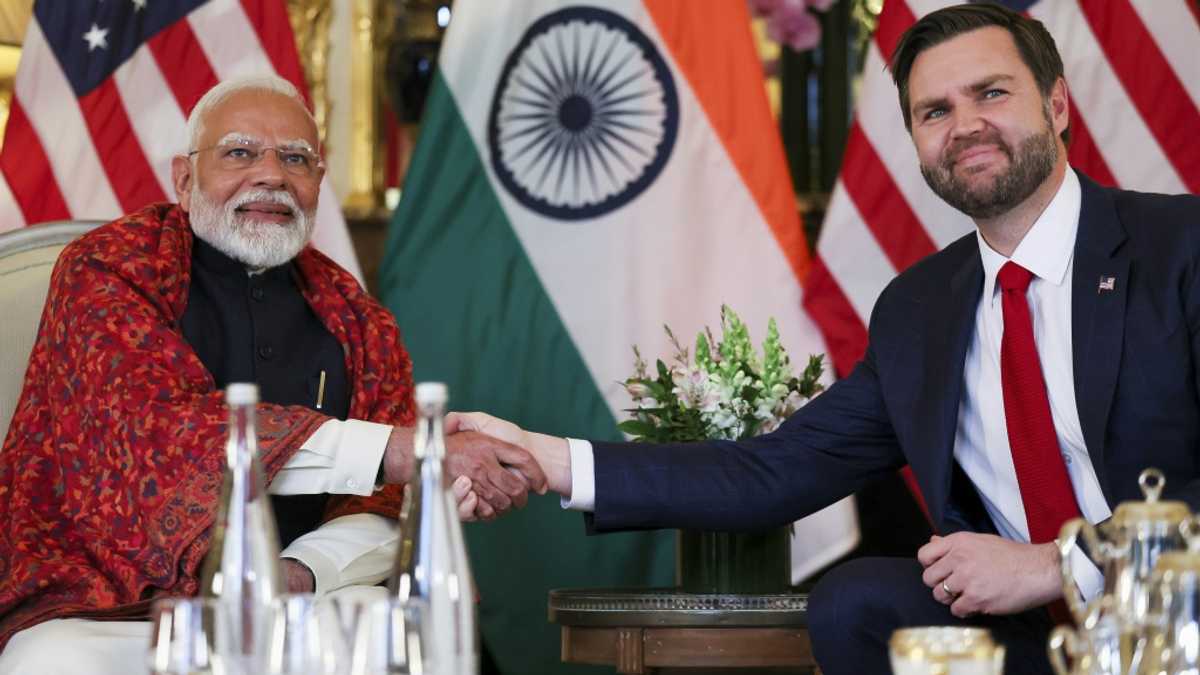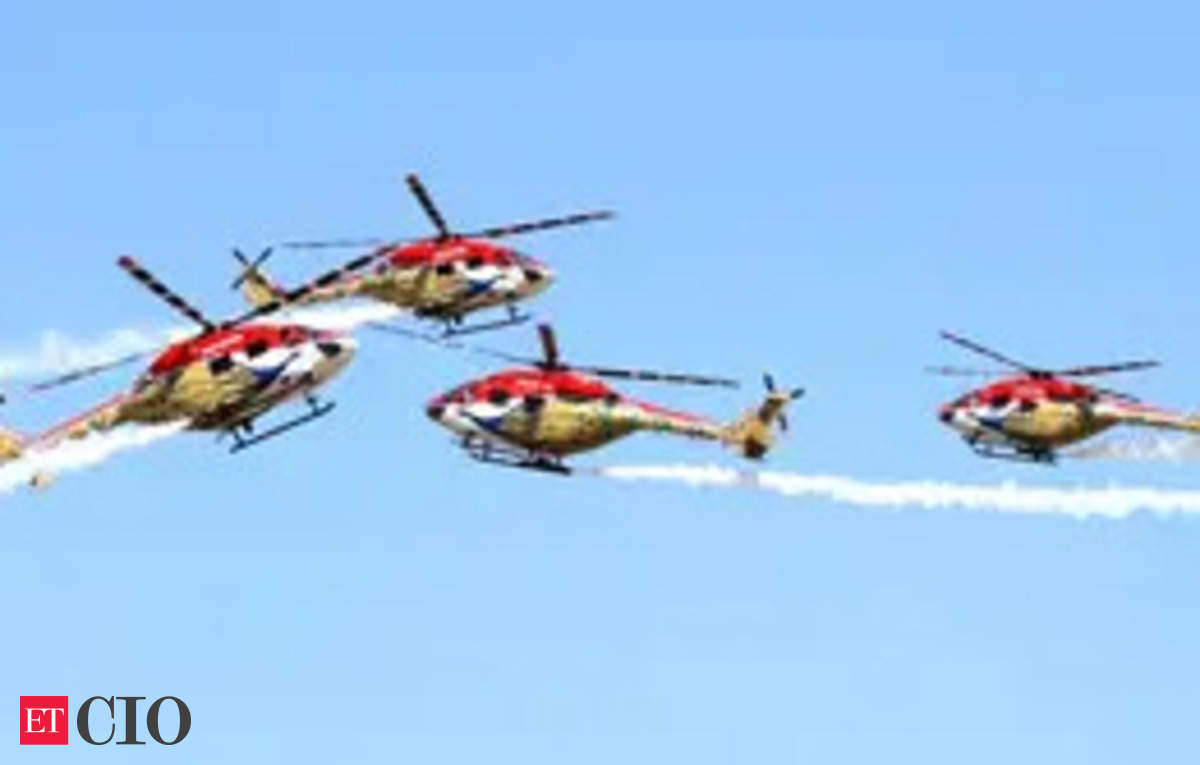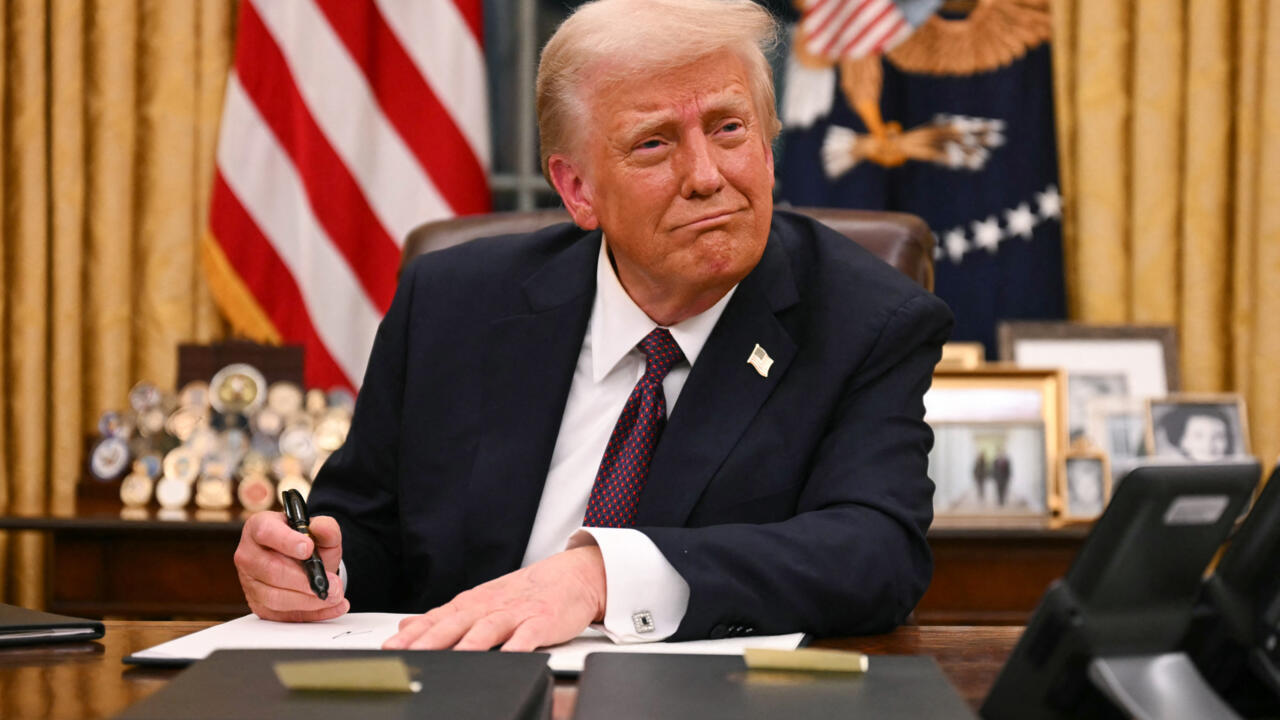Defence Minister Rajnath Singh on Monday urged global defence manufacturers to develop “targeted solutions and counter measures” for challenges posed by the prevailing geopolitical volatility and rapidly evolving warfare technology, while highlighting opportunities in India’s expanding defence sector.

Speaking at Asia’s largest defence exhibition, Aero India 2025, Singh emphasised that security transcends borders in today’s interconnected world. “Our security or peace does not exist in isolation as these are shared constructs that transcend national borders,” he said at the Yelahanka airbase.
“In these challenging times, where the global security situation is fragile, the rules-based order is being challenged and technologies are creating new opportunities and vulnerabilities, this roundtable will have a significant impact on how various initiatives are taken to boost security,” Singh told industry leaders.
The five-day biennial airshow has drawn over 900 exhibitors and officials from around 80 countries, including 120 CEOs of leading defence firms, showcasing India’s growing defence manufacturing capabilities and technological advancement.
Singh highlighted how modern warfare is increasingly shifting from hardware-centric systems to software-based ones. “Our reliance on space-based navigation systems, communication and surveillance requires these assets to be integrated with our operational plans. The use of drones in recent conflicts indicates that the future will depend on the integrated efforts of manned, unmanned and autonomous warfare systems. Our efforts in defence manufacturing must focus on these emerging areas,” he said at a CEOs roundtable.
The minister said the airshow would strengthen international cooperation, calling it “a confluence of critical and frontier technologies” that will “provide a platform to further strengthen relations among like-minded countries based on mutual respect and interest to deal with today’s uncertainties.”
The defence minister’s push for modernisation comes against the backdrop of India having allocated ₹6.81 lakh crore for defence spending in the 2025-26 Union Budget, including ₹1.8 lakh crore for military modernisation. The country has earmarked 75% of the modernisation budget for domestic procurement to boost self-reliance.
Highlighting the private sector’s crucial role, Singh said: “The private sector is going to play a big role in the economic mainstreaming. Due to its drive, resilience and entrepreneurship, the sector is capable of bringing in a new wave of prosperity.” He noted that in many advanced nations, private industry leads defence production, adding that “the time has come for the sector to be an equal partner in the Indian defence industry too.”
“We often interact as buyers and sellers, where our relations are at a transactional level. However, we forge partnerships beyond the buyer-seller relationship to the level of industrial collaboration,” Singh said, adding that the presence of foreign participants demonstrated their shared vision for the sector.
The government’s emphasis on domestic manufacturing received a boost as British engine maker Rolls-Royce announced plans to double its sourcing from India by 2030. The company currently sources high-precision parts and engine components for its defence, civil aerospace and power systems businesses from Indian firms.
“India plays a significant role in our long-term strategy, both as a sourcing hub and as a strategic partner in advancing defence technologies,” said Alex Zino, who handles business development and future programmes at Rolls-Royce.
Singh said India must protect its people and territory in a “hostile environment,” emphasising the government’s focus on modernizing armed forces through “a strong, efficient, resilient and future ready defence industrial ecosystem.”
The minister noted that India has emerged as “the preferred global destination for aerospace components and complex system assembly,” with both public and private sectors playing crucial roles in this transformation. He emphasised how the defence industrial sector, previously separate from the national economy, has now been fully integrated and serves as “a motor powering the growth engine of the Indian economy.”
The exhibition aims to facilitate co-development and co-production opportunities through strategic partnerships and joint ventures to accelerate indigenous production.











